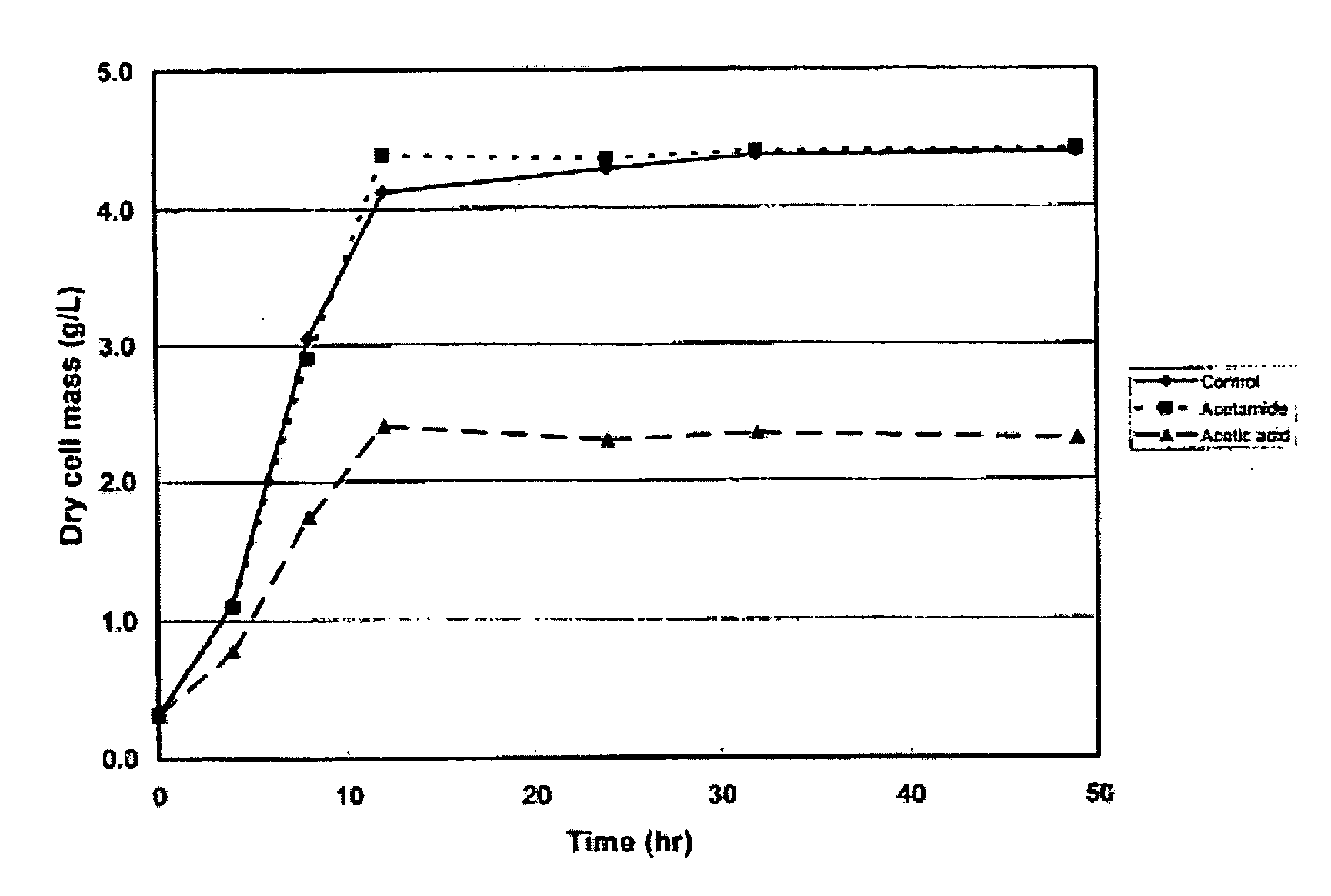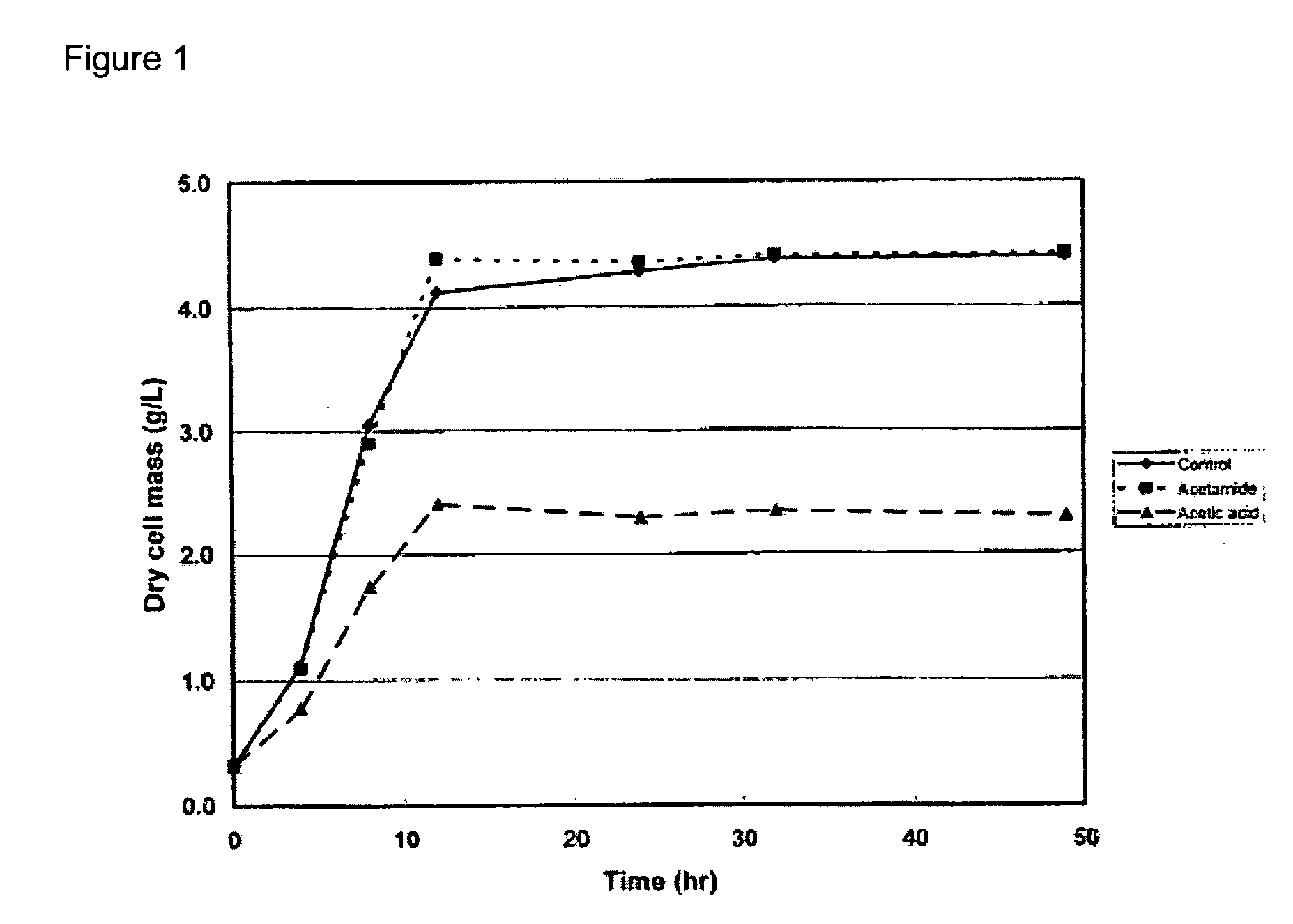Treatment of biomass to obtain fermentable sugars
a technology of biomass and fermentable sugar, which is applied in the direction of biofuels, waste based fuels, applications, etc., to achieve the effects of increasing the accessability of cellulose, reducing the size, and increasing the exposed surface area
- Summary
- Abstract
- Description
- Claims
- Application Information
AI Technical Summary
Benefits of technology
Problems solved by technology
Method used
Image
Examples
example 1
[0096] Stover Pretreatment at High Biomass Concentration, High Temperature and Comparison of Ammonia Concentrations
[0097] The Zipperclave® reactor vessel and head plate were preheated to the target pretreatment temperature before introduction of the biomass charge by cycling steam into the reactor and venting several times. Condensate formed during preheating was removed by vacuum aspiration before pretreatment. The Hastelloy® pail was loaded with 0.635-cm (¼-in.) milled stover (100 g, dry weight basis) and inserted into the pre-warmed reactor. The reactor agitator was set to 20 rpm while a vacuum (approximately 85 kPa) was applied to the vessel interior and biomass charge. Ammonium hydroxide solution of the necessary strength to give a dry weight of biomass concentration of 30 weight percent relative to the weight of the biomass-aqueous ammonia mixture, as well as the desired ammonia concentration listed in Table 1, was injected near the bottom of the vessel with a spray type nozz...
example 2
Stover Pretreatment at High Biomass Concentration, Low Temperature, and Very Low Ammonia
[0100] The Jaygo reactor was charged with 0.635-cm milled stover (13 kg, dry weight basis). A vacuum (67.7 kPa) was applied to the vessel, and dilute ammonium hydroxide solution was injected to give an ammonia concentration of 6.2 g ammonia / 100 g dry weight of biomass and a dry weight of biomass concentration 30 weight percent relative to total weight of the biomass-aqueous ammonia mixture. The vacuum was relieved, and steam was applied to the jacket to heat the stover to 100° C. The soaked stover was held at temperature for 8 hr with constant mixing at 32 rpm, then allowed to cool overnight with continued mixing of the resulting slurry.
[0101] Whole, unwashed pretreatment slurry containing 0.5 g of cellulose (based on initial feedstock composition) was added in a final volume of 50 mL to a 125-mL shake flask. Acetic acid (10-100 μL) was added, if necessary, to titrate the pH of the ammonia-pret...
example 3
Cob Pretreatment at High Biomass Concentration, Low Temperature, and Very Low Ammonia Concentration Followed by High Biomass Concentration Saccharification
[0103] Whole or fractured corn cobs (approximately 13 kg, dry weight basis) were loaded into the Jaygo reactor. Cobs were fractured by passing through the disk refiner (General Methods) equipped with plates C-2975. Resulting fractured cobs were passed through a 1.27 cm screen. Any pieces retained were passed through the disk refiner again with a 0.5 cm smaller gap. A vacuum was applied to the reactor, and dilute ammonium hydroxide solution was injected to give the final desired ammonia concentration (2% or 6%) and concentration of dry biomass (30% or 40%), as given in Table 3. The vacuum was relieved and steam was applied to the jacket to heat the cobs while soaking to a temperature of 93° C. for the whole cob sample and 85° C. for fractured cob samples. Short periods of increased agitator speeds (up to 96 rpm) were applied in an...
PUM
| Property | Measurement | Unit |
|---|---|---|
| temperature | aaaaa | aaaaa |
| temperature | aaaaa | aaaaa |
| temperature | aaaaa | aaaaa |
Abstract
Description
Claims
Application Information
 Login to View More
Login to View More - R&D
- Intellectual Property
- Life Sciences
- Materials
- Tech Scout
- Unparalleled Data Quality
- Higher Quality Content
- 60% Fewer Hallucinations
Browse by: Latest US Patents, China's latest patents, Technical Efficacy Thesaurus, Application Domain, Technology Topic, Popular Technical Reports.
© 2025 PatSnap. All rights reserved.Legal|Privacy policy|Modern Slavery Act Transparency Statement|Sitemap|About US| Contact US: help@patsnap.com


